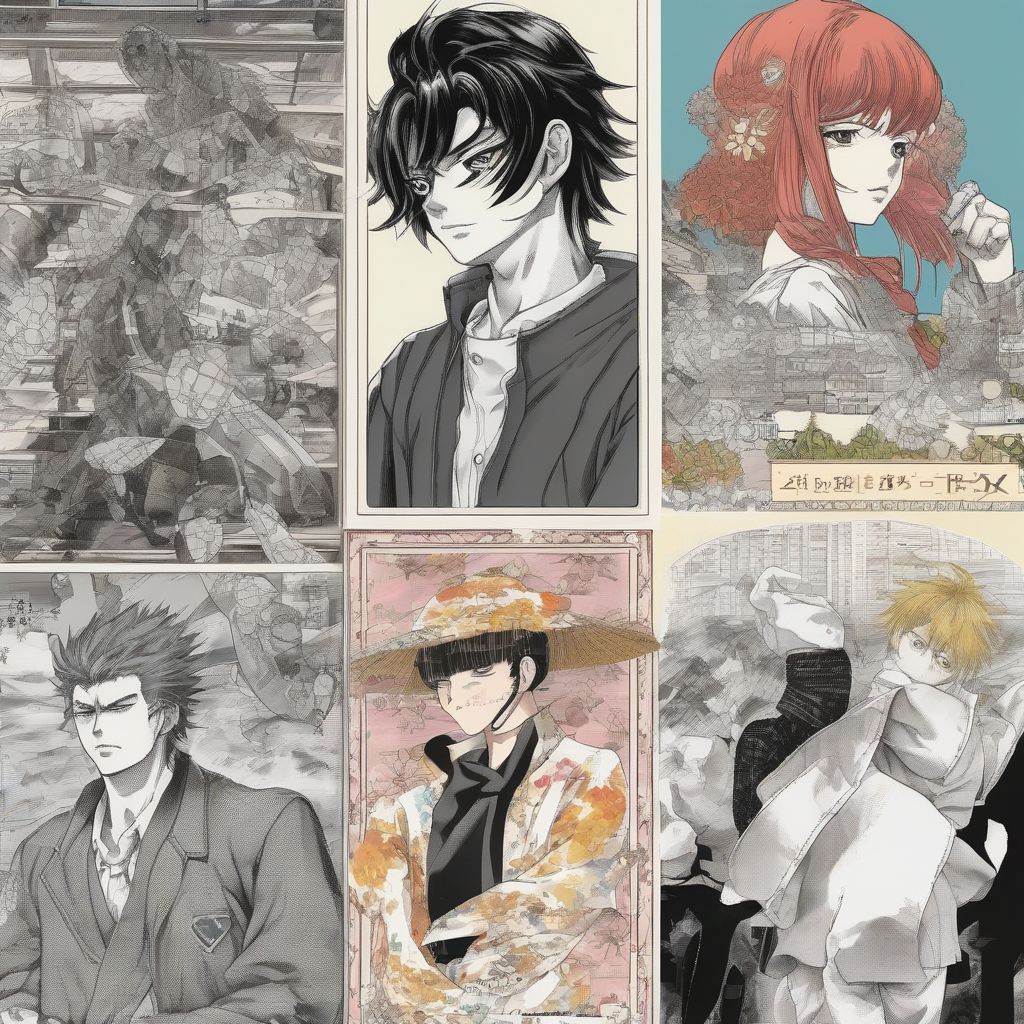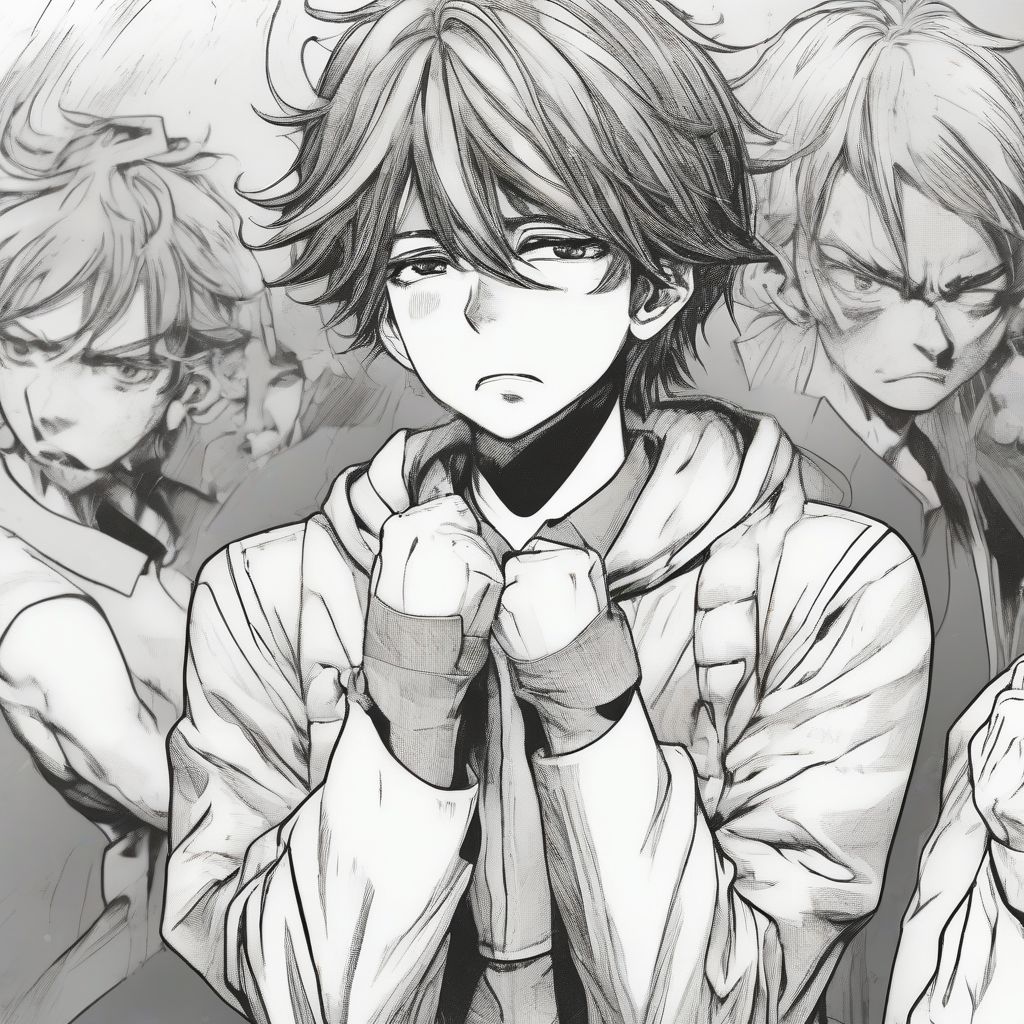Imagine scrolling through endless recommendations, each manga cover a portal to a potential new obsession. What makes you click? The story premise, of course, plays a crucial role, but let’s be honest – the artwork often makes the first impression.
In the vast and vibrant world of manga, artwork is more than just pretty pictures; it’s a language. It speaks volumes about the genre, tone, and even the target audience of a series. Understanding how artwork influences manga recommendations can be the key to discovering hidden gems and connecting with your next great read.
A Visual Feast: Deciphering Genre Through Art Style
Manga art styles are incredibly diverse, ranging from the ultra-realistic to the charmingly simplistic. This diversity allows artists to visually represent a myriad of genres, making it easier for readers to navigate the medium.
- Shonen: Known for action-packed narratives, shonen manga often features dynamic poses, sharp lines, and exaggerated features to convey power and motion. Think of the electrifying energy radiating from Goku in “Dragon Ball” or the fierce determination etched on Naruto’s face.
- Shoujo: Focusing on romance and relationships, shoujo manga typically employs a softer aesthetic. Large, expressive eyes, flowing hair, and delicate features are common, creating an atmosphere of innocence, beauty, and emotional depth. The iconic image of Sailor Moon, with her flowing hair and sparkling eyes, perfectly embodies this style.
- Seinen: Aimed at older male audiences, seinen manga often explores more mature themes with gritty realism or stylized complexity. The artwork reflects this maturity with detailed backgrounds, nuanced expressions, and a greater emphasis on atmosphere. “Monster,” with its haunting realism, exemplifies this.
- Josei: Targeting older female readers, josei manga often delves into the complexities of adult life, relationships, and careers. The artwork tends towards realism, often featuring more mature character designs and a focus on everyday settings. “Honey and Clover,” with its relatable characters and slice-of-life art style, is a prime example.
 Manga Art Styles
Manga Art Styles
By recognizing these visual cues, readers can quickly identify genres that align with their tastes. For example, a reader drawn to the vibrant energy of shonen art might not gravitate towards the softer aesthetics of shoujo, and vice versa.
Beyond Genre: Conveying Tone and Atmosphere
Beyond signaling genre, artwork plays a vital role in establishing the overall tone and atmosphere of a manga.
- Color Palettes: Just like in traditional art, color palettes evoke specific emotions and set the mood. Warm colors like red and orange can suggest passion, action, or danger, while cool colors like blue and green might imply peace, tranquility, or mystery.
- Linework: The weight and style of lines used in manga can drastically impact the tone. Bold, thick lines can create a sense of power or intensity, while thin, delicate lines might suggest fragility or elegance.
- Paneling: The arrangement and size of panels contribute to the pacing and emotional impact of a scene. Large panels can emphasize dramatic moments, while smaller, closely packed panels might create a sense of urgency or chaos.
Think of the stark contrast between the dark, gritty art style of “Attack on Titan,” which immediately conveys a sense of dread and danger, and the bright, cheerful aesthetic of “Fruits Basket,” which promises a heartwarming story about friendship and healing.
The Power of the Cover: First Impressions Matter
In the digital age, where countless manga are just a click away, a striking cover can be the deciding factor between a reader picking up a new series or scrolling past it.
- Eye-Catching Compositions: Dynamic poses, intriguing character interactions, and a clear focal point can instantly draw the reader’s eye.
- Intriguing Character Design: Memorable character designs, with unique features and outfits, can pique curiosity and hint at the characters’ personalities.
- Title Treatment: The font, style, and placement of the title can complement the artwork and further enhance the overall aesthetic appeal.
A well-designed cover acts as a visual synopsis, offering a glimpse into the world the manga invites readers to explore.
The Human Element: Tapping into Emotional Resonance
While genre and tone are crucial, ultimately, the most compelling manga artwork connects with readers on an emotional level.
- Facial Expressions: Expressive eyes, subtle shifts in the mouth, and even the way hair is drawn can convey a wide range of emotions, allowing readers to empathize with the characters.
- Body Language: Posture, gestures, and the way characters interact with their surroundings can speak volumes about their relationships, personalities, and emotional states.
- Symbolism: Artists often use symbolism to add layers of meaning and evoke specific emotions. For example, flowers might represent love or loss, while shadows could hint at hidden secrets or inner turmoil.
When artwork successfully captures these nuances of human emotion, it creates a powerful connection with the reader, drawing them into the story on a deeper level.
 Emotional Manga Art
Emotional Manga Art
Conclusion: A Visual Journey
Manga artwork is more than just aesthetics; it’s a powerful tool that shapes recommendations, influences reading choices, and ultimately enhances the storytelling experience. By understanding the language of manga art, readers can navigate the vast world of manga with greater confidence, discovering new favorites and deepening their appreciation for this captivating art form.
So, the next time you’re browsing for a new manga to read, take a moment to appreciate the artwork. Let the visuals guide you, and you might be surprised at the hidden gems you uncover.
[amazon bestseller=”manga”]
